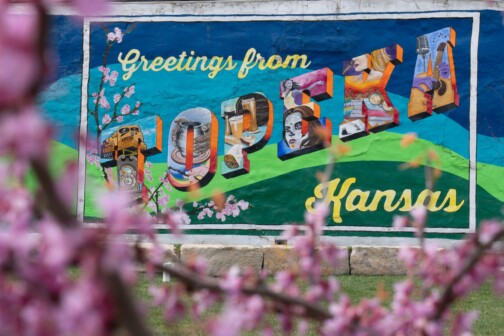The arts exist in a jungle all their own. They live and die by their own chutzpah. You cannot save them by confining them in a cage of Political Correctness.
This truth doesn’t seem to have occurred to Dallas City Councilman Domingo Garcia, whose proposal for minority arts “funding parity” caused tremors.
Socially, it sounded fine. It seemed like a good move on the path to 14-1 fair play. About 14.7 percent of city arts funding has been recommended for Dallas’ minority groups. A five-year plan calls for that amount to be upped to 20 percent. But Garcia looked at our population, 50 percent of whom are minority citizens, and he came up with the logical proposal: Give 50 percent of the city’s some $4 million in arts money to minority arts groups.
Artistically, Garcia’s proposal was all wrong. But the good councilman has given us a rare insight into why the arts in America have been playing out the longest death scene south of Camille: Because they’re incompatible with the modem democratic process. You can’t vote art into existence. You can’t make it live or die by the bottom line. You can’t make it accountable to an electorate. And many artists are just as confused about this as city officials are. They await the dole.
It’s a useless vigil. The National Endowment for the Arts is as good as dead. In precisely the same week in May in which Garcia was trying to teach Dallas’ dogged arts to bark equality and beg for a bone, Anne-Imelda Radice, the NEA’s new acting chairman, was in Washington hunkering down over a grant. Her advisory National Council on the Arts had approved it, 11 to 1. But it was a $10,000 allocation for a sexually explicit work at Massachusetts Institute of Technology. And Radice, the priestess ordained by the administration to reverse the paganism of ousted chairman John Frohn-meyer, chanted her new voodoo. Certain federal arts grants are “just not going to fly” anymore, she said. Clearly, she was getting ready to veto the grant. On May 12, she did.
And here in Dallas, the well-intentioned Garcia was proving that wherever the game of football is played, the pigskin looks the same: He had made our arts, like Washington’s, the object of politics, something to be kicked around, this time on the bloodied field of race relations,
The smartest voice heard above the fray was Idelle Rabin’s. She chairs The Dallas Cultural Arts Commission.
Rabin’s message to the council was that they didn’t know enough about art to make an intelligent decision.
They seem to have known their shortcomings: On May 27, the council voted 9-6 against Garcia’s plan. They also voted by the same margin to table a compromise plan from Chris Luna. Garcia and Luna may be back with other approaches to the same goal, but in the meantime they’ve triggered heated debate on some of the hard truths about our arts. Here’s why they can’t be handled like other community organizations:
What Garcia may not want to recall is how fast the city backpedaled on arts funding just a year earlier, in May 1991. The city was scrambling to clarify that while it had fund ed the minority gay ensemble, Theatre Gem ini, it had not specifically funded that company’s presentation of the NEA-rejected performance artists Tim Miller and Holly Hughes. Both outspokenly homosexual writer/performers staged the kind of event that could peel the gilt, or guilt, right off a city’s seal. Dallas should fund gay arts as it funds any others, of course. But is Garcia ready for the flak that’s going to fly when gay and other minority artists make their de mands for more taxpayers’ bucks?
Real art makes life easy for no one. Indeed, if we had more good playwrights in Dallas and more theaters giving them quick, responsive productions. Garcia might see himself satirized on one of our stages, bare-breasted and fiery-eyed as a revolutionary figure of liberte, egalite et dramatis personae. Genuine art has a way of turning on you like that.
The sad reason that Garcia doesn’t have to fear his home-town satirists is that our arts folks rarely fulfill their ancient man date to provoke. They’re chicken. As else where in the United States throughout our two centuries, they’ve capitulated to the Cyndi Lauper dictum. Audiences just want to have fun. This, not lack of funding, is the ultimate reason that American arts are dying and being replaced by entertainment. They haven’t fought for and earned a muscular, don’t-tread-on-me place in our society as they have in other nations. In the Nether lands, you have to work to find a show in which the actors don’t strip down to God’s Own Costume. And they’re getting a lot more government funding to do it than our fully clothed guys get here.
Our ethnic-minority artists have argued that the arts of Hispanic, African and other cultures are just as valuable as white, Euro-based works. They’re right. The aes thetic intelligence of any culture deserves respect. That’s one reason that Fair Park’s coming Museum of African-American Life and Culture is so exciting. But in many cases, ethnically based work is closer to craft than art. This is a difficult, sensitive point. It deserves special reflection. And, certainly, we have to worry about just who is deciding what will be called craft and what will be called art. But there is a difference, one too important to ignore,
In Texas, we can compare square dance to ballet. When you do-si-do, you execute a sassy moment of folk tradition. But when you leave the ground in a tour jete, you leap and turn in a way that requires a career commitment to a codified system of classical, formal movement.
During the debates that Garcia sparked, some said that any ethnically based music is “just as good” as a Beethoven symphony. Yes, a Mexican mariachi tune is “just as good” as Beethoven’s Seventh Symphony. And yes, the neatly drilled young dancers of the recently reborn Anita N. Martinez Ballet Folklorico-Dallas are doing something “just as good” as George Balanchine’s The Four Temperaments ballet. But both the mariachi music and, by definition, the Folklorico’s dance, are on a par with American square dance, not with Beethoven and not with Balanchine. On the other hand, if it’s our limping Ballet Dallas trying to perform Balanchine, then the craft of the Folklorico is going to look like the highest art form by comparison.
All Hispanic culture isn’t folk work, of course. Its dance includes flamenco, which is a ravishing, elevated form-an art born in gypsy/folk tradition, as was the mural artistry of Diego Rivera and the self-meditative surrealism of Frida Kahlo. And Joaquin Rodrigo interpreted the sounds of his culture in his pieces for guitar and symphony, the concierto de Aranjuez and Fantasia para un Gentilhombre. But Garcia’s proposal could give its cut of 50 percent of our arts budget to a mariachi band, taking money from the Dallas Symphony-which is the only company in this city that can perform the orchestral genius of Rodrigo.
And about that Beethoven symphony. The Seventh’s movement marked presto was derived from an Austrian pilgrims’ hymn. The allegro con brio was suggested by the Irish folk song “Nora Creina.” And Balan-chine was a Russian immigrant.
It’s all ethnic.
During the discussions that followed Garcia’s proposal, the co-founders of the 7-year-old Teatro Dallas, Cora Cardona and Jeff Hurst, were among the most vocal advocates of the plan. As tempers flared, Teatro Dallas was in the midst of one of its best and worst productions. It was dramatizing the tale of La Malinche in alternating performances of English and Spanish-something none of our other companies can do. Unfortunately, the piece was overwrought pageantry. Sets and costuming were on the order of high-school theater. The actors fell woefully short of the heroics needed to tell the epic legend of a woman who sold out the Aztecs.
More money would help Teatro, yes. But tax revenues alone can’t buy vision. Otherwise, our established, mainstream arts organizations would have their aesthetic acts together and be producing a lot more compelling work than they are.
What, then, should the arts mean in this city? Are they utilities to be regulated along with the water? Something is missing between what the arts could be to us and what they really are. The City Council, as Rabin tried to tell them, surely doesn’t know.
But here’s that hard truth again. You can’t legislate art. Not even to beat racism. The arts are a kind of natural journalism. They observe and express the human experience. In New York City this spring, Anna Deavere Smith’s Fires in the Mirror at the Joseph Papp Public Theater studied the Crown Heights riots between Hasidic Jews and blacks. The script is verbatim interviews with riot participants and observers. It’s unbeatable art. Dallas has seen little like it.
Get our weekly recap
Brings new meaning to the phrase Sunday Funday. No spam, ever.
Related Articles

Commercial Real Estate
The Mystery Ownership Behind That Planned Uptown Central Market
You'll never guess.
By Tim Rogers

Local News
Dallas Assistant City Manager Robert Perez Hired to Lead Topeka’s Government
Perez parlayed his two decades of municipal experience (including two years as assistant city Manager in Dallas) into the top spot in Topeka, Kansas, sources tell D.

Business
Executive Podcast Club: DFW C-Suiters Reveal Their Top Listens
Kim Butler, Chris Trowbridge, Fred Balda, and more share the one podcast they think everyone should listen to—and why.


